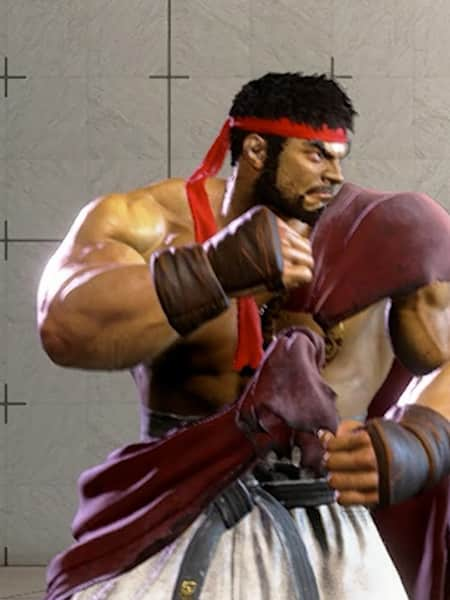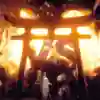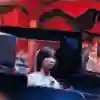Gaming
Street Fighter 6’s 2023 release was met with levels of success that even Capcom might not have anticipated. Like SF5 before it, SF6 set an EVO record for entrants, totaling 7061 competitors at EVO 2023. The next closest game at the tournament, Guilty Gear Strive, had about 2500 in comparison. The new Street Fighter was poised to set the tone for s mre generation of fighting game players, and Capcom rose to the occasion.
Comparatively, Street Fighter 5 launched to a rather rocky reception, but over time (with many updates) ended its lifespan as a very well put together game.
Lessons Learned from Street Fighter 5
Street Fighter 5 released in February 2016 with little to do aside from versus play. There was a small story mode for each character and a survival mode, but nothing resembling a single player campaign. The servers were struggling and, at first, the online rooms were only big enough for 2 players.
Capcom definitely learned from this, as SF6 launched with enough side content to fill out a separate game. World Tour is a story mode taking the player through Metro City and Nayshall, with stops at the fighter roster’s home locations around the world.
With your created character (that you can also use online during Avatar Battles in the Battle Hub), you undertake missions and train under the game’s iconic characters like Ryu and Chun-Li. Your avatar will use their style, and you can gain more of their abilities by interacting with them, learning more about their character at the same time.
This mode serves as a tutorial, story, and comfort zone. Between missions, you can stop by restaurants, do minigames to learn the game's mechanics, or beat up gang members in the street. The ability to boot up and still enjoy yourself even if you don’t feel like testing yourself against the fires of ranked netplay is integral.
Capcom also leveled up their online offerings. Your place in ranked mode is unique to each character so, if you reach Master as Ken, you don’t have to worry about your secondary Zangief bringing your rank down. You’re definitely encouraged to take more characters for a spin.
The netcode is heavily improved over the previous title, with people routinely practicing against opponents across the globe. The online lobby has eight spots, can run four games at once, and each slot can be turned into an online training room.
SF5 had a problem with visual clipping, and the hair physics didn’t always make sense but SF6 has clean animations and no noticeable physics problems occuring with the current roster. (rashid doing flips clip)
Gameplay
Each version of SF delivers a fresh take on this decades old series, and SF6 incorporates all of them in some way. The Super meter from ST, SF3’s Parry, FADC from 4, and 5’s V-system. For Street Fighter 6, the Drive system acts as the title’s core. Each of the game’s system mechanics, aside from Supers, rely on it, even the series’ iconic OD special attack (called EX moves in previous entries). In Street Fighter 5, 4 and 3, EX moves relied on the Super meter.
In SFV, you had to build V gauge by taking damage or using your V-Skill. In 6, you immediately start off with a full Drive gauge. This means players have much of their character's strength up front. Many criticized V-Trigger for being too good of a comeback mechanic, locking away the “real” character to the end of the match.
The other uses of the Drive meter are Drive Impact, Drive Rush, and Drive Reversal. Drive Rush is a command dash that powers up the next normal, giving it better recovery on hit or block, leading to better damage and mixups. Drive Reversal is this game's guard cancel, serving the same “get off me” purpose as V-Reversal in SFV.
Drive Impact is a forward moving attack with 2 hits of armor that launches the opponent, or causes a crumple state when it punishes the opponent. Players are encouraged to use their own Drive Impact to absorb the opponents and strike back with a devastating combo once they’re crumpled.
Both games each have a unique mechanic that incentivizes players to try to punish reckless attacks their opponent throws out. SFV’s Crush Counter gives certain normals much more pronounced benefits than regular counter hits.
SF6 debuted a similar idea, Punish Counter. When punishing the opponent’s whiffed or blocked attacks, the first attack you land gains hitstun, opening up the combo game to deal more damage or get better oki.
This makes whiff punishing much more important. Knowing this, Capcom gave normals in SF6 bigger hurtboxes and more recovery, opening up opportunities to use this punish counter during neutral.
V-Trigger and V-Skill were huge parts of each character’s kit. SF6 simply packages these major tools within the characters regular moveset. Cammy’s Spin Knuckle is just a special move, while Guile’s V-Trigger install is now his Level 2 super.
Speaking of supers, each character has three as opposed to 1 in SFV. The level 3 super being the cinematic, high damage combo ender. Like Guile, some characters have installs for a level 2, but many have extra damaging supers with varying properties.
Character Design and Art Direction
This might be more subjective than the concrete differences in content and gameplay, but SF6 feels much more stylish. Hip hop, graffiti street art and punk culture felt like a big part of SF3 and SF4, (nothing will beat SF4’s Indestructible intro song), and Capcom knew the community missed that feeling.
The logo itself has paint splattered behind it, clueing us in on the design philosophy. Kimberly and Jamie, the first newcomers we are introduced to both embody this culture. Kimberly level 3 activates her headphones and her main special move shoots spray cans. Jamie breakdances on you as his best combo ender.
The new outfits are much more in line with modern day standards, or have additions that give a little bit of flair, like Ryu’s sash, marking his steps to mastery, and he’s finally not fighting in swamps barefoot. Luke, Cammy, Guile are examples of outfits you might see walking around outside.
The paint streak effects on Drive Impact is reminiscent of SF4’s Focus Attack, and the paint splatter when you interrupt the opponent with a perfect parry illustrates the feeling exactly. Drive Rush and Drive Reversal are similarly colourful, offering visual clarity and flair.
Outside the game
Capcom clearly put their heart and soul into SF6. That’s what the community responds to, proven by the immense success of the game’s release. Capcom understands the opportunity on their hands, and are proudly supplementing SF6 by going just as hard in promotional material and the competitive ecosystem.
Just a month after the release of SF6, they revealed a collaboration with hugely popular shooting game PlayerUnknown’s Battlegrounds (PUBG). Ryu, Chun-Li, Guile and Luke are all playable characters in the battle royale.
The major way Capcom is through its support of the competitive scene. Capcom Pro Tour this year will have a prize pool of over two MILLION dollars. Half of that will go to the winner of Capcom Cup X. That’s right, whoever wins Capcom Cup X for SF6 will instantly become a millionaire.
Capcom was definitely ahead of its peers in prize pools already, the last two SFV Capcom Cups combined 1st place earnings were almost 400K dollars. But they upped their game tremendously for the first year of SF6.
The hype for SF6 events are through the roof, it’s 7000 plus entrants had a big hand in EVO 2023 possibly being the esport event with most participants, and Capcom is rising to the occasion, building on the good from SFV, while throwing in some upgrades where necessary.









